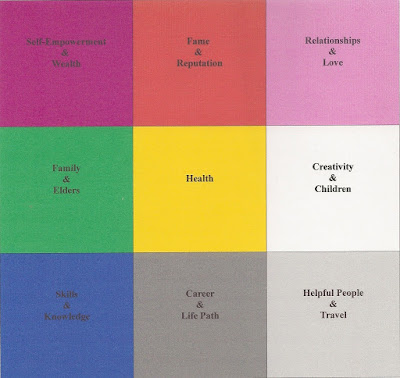Maria Teresa De Donato, PhD, RND, CNC, CMH, CHom
Since January 2016 we started to
consider the Theory of Yin and Yang (http://holistic-coaching-
dedoholistic.com/?p=1040), the concept
of duality that it represents and the impact that it may have
on our life, starting with our health and
wellness. We have also seen which aspects and organs are
classified as Yin and which ones as
Yang and how any imbalance – be it manifested as excess or
deficiency – of either Yin or Yang
affects the body and how it is possible, through proper nutrition
and lifestyle, to restore a state of
balance. (http://holistic-coachindedonato.blogspot.com/2016/02/yin-
Another way to look at the impact that
Yin and Yang may have on our health as well as on all our
areas of life is through Feng Shui. It was not long ago that someone asked
me how Chi (also called
qi, prana, life force or cosmic breath) might be increased or managed
in Nature. Chi cannot be
“increased” in Nature, since it is a Cosmic Energy which permeates
everything and we can neither
destroy nor create it. We can, however, improve the quality, quantity and its
natural flow within both
our physical body as well as our indoor and outdoor living environments and bring balance and
health in our life.
The Art of Feng Shui, in this regard,
can be extremely useful. Feng Shui is a Chinese
philosophical system, literally meaning
“wind and water”, which, by taking into account not only
architectural structures but energy
flows as well aims at identifying causes for physical, mental, and
emotional imbalance and at correcting
each situation accordingly by allowing Chi to freely flow in,
out, and through our environments as it is
naturally supposed to.
Despite its metaphysical approach and
the fact that many might see it almost as mystical, the art
of Feng Shui is not meant as a
religious means, but rather as an environment-oriented discipline
whose goal is to realize much healthier and
harmonious inside and outside living spaces which may
positively impact our health and all aspects of
our life.
The essence and very foundation of it
can be identified in the following criteria:
- research of balance and/or imbalance of chi flow;
- concept of alignment;
- the assumption that our emotional and mental state and energy do affect our outdoor and indoor environments;
- the assumption that the condition of the environments we live, work, and spend our time in, both inside and outside, also affects us spiritually, emotionally, and mentally.
Feng Shui also reflects the Yin and
Yang concept of Polarity and, consequently, takes into
account the balance and harmony among
opposites and, when needed, tries to reestablish the
equilibrium among them in order to
allow the natural circulation of Chi.
Besides the Yin (Female/Passive
Energy) and Yang (Male/Active Energy) Polarity, a second
theory which plays a major role in Feng
Shui is the one related to the Five Elements (Wu Xing), also
known as Five Phases, Agents,
Movements, Processes or Stages. The elements Water, Wood, Fire,
Earth and Metal are the pillars of this
discipline and represent how Yin and Yang forces manifest and interact with each other by either
harmonizing or interfering with one another. The dynamics of all
this ends up being reflected in one’s own
life and at all levels, be it career, wealth, relationships, love
and even health, be it physical, mental
and/or emotional.
The Five Elements Theory is a
fundamental component also of Traditional Chinese Medicine
(TCM) which states that these Five
Phases or Agents are present in each individual, though in
different measures, and can and do manifest as
being in balance and harmony or not through one’s
own state of health depending on the following
aspects:
- the quantity and quality of each of the five elements being present;
- the quantity and quality of the Chi being present;
- their interaction with the quantity and quality of Yin and Yang;
- the Seasonal Attunement which can greatly and positively impact one’s health and well-being when harmonizing with climate changes and nature’s cycles, this facilitating a state of optimum health.
The scheme of the Five Elements, their
actions, interactions, and impact on health and nature
can be summarized as in the
following Table 1:
Table 1: Summary of the
Five Elements and their components
Finally, the Bagua, which are eight
trigrams or symbols that in Taoism constitute fundamental
concepts of reality, are also paramount
in Feng Shui. They are symbolically represented by an
octagon plus its center. These nine zones
mirror the major nine areas of our life, that we could
identify also
as aspirations, as Table 2 indicates.
According to Feng Shui, by bringing balance and
harmony to the Bagua one can correct practical aspects
of his or her own life according to the area(s)
which require(s) attention.
Table 2: Bagua




